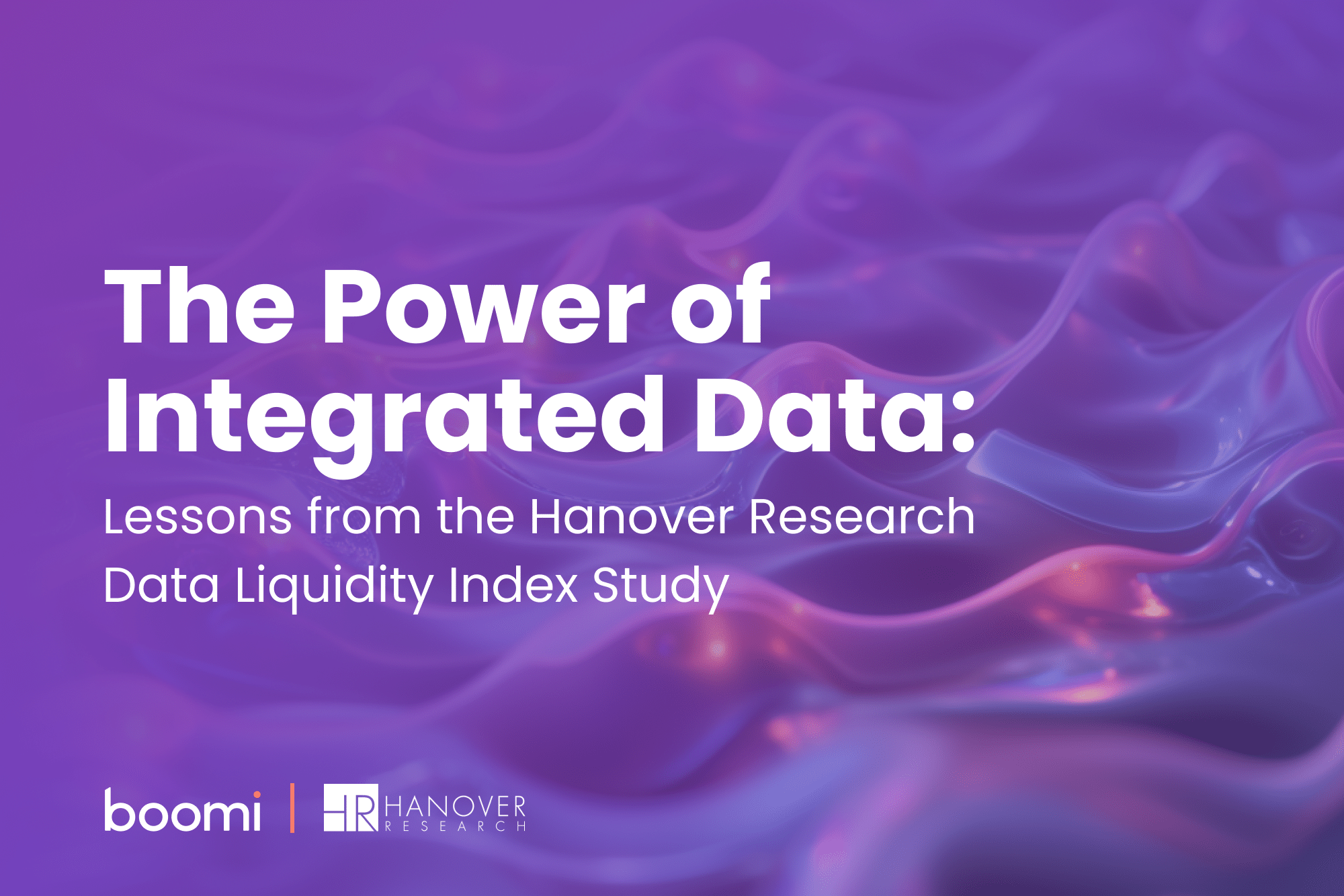Data liquidity is the ability to access, combine, and analyze data from various sources, extract relevant information, and apply it effectively to specific business scenarios. In simple terms, data liquidity is a measure of how well your organization can get the right data to the right place at the right time. An October 2024 report by Hanover Research — the Data Liquidity Index Study — commissioned by Boomi, sheds light on the current state of data liquidity across organizations.
Although more widely used now, the term “data liquidity” is not new. The earliest mentions were in the Healthcare IT context around 2010 and gained traction with the rise of electronic health records (EHRs). Around the same time, it was adopted as a concept in broader digital ecosystems.
Today, businesses increasingly rely on data to drive their operations. And as these organizations strive to make informed decisions and respond swiftly to market changes, their ability to understand and improve data liquidity is essential.
Study Parameters
Seven hundred fifty respondents, age 22 or greater, participated. Respondents were employed full-time at organizations with $300M+ in annual revenue. They worked in the US, Canada, UK, Germany, and Australia and were familiar with their organization’s data solutions and integration capabilities. They also had selection and purchasing authority.
Key Findings From the Study
Integrating data systems is the cornerstone of data liquidity. One of the most striking results of the study is the continued focus on data integration, even among those organizations whose data was already well integrated:
“While organizations’ data is currently integrated, it continues to be a top priority. Most organizations (83%) say their data is very (56%) or extremely (26%) integrated currently. Accordingly, data integration is a priority for organizations both now (87%) and in the next 2 years (77%).”
The positive impacts of data integration are well known. Study participants mentioned two such impacts that are often reported in digital transformation efforts: increased operational efficiency (57%) and improved data reliability (53%).
The study also examined how organizations integrate their data. Participants reported that their organizations typically integrate data sources by implementing APIs (59%), employing ETL processes (50%), and utilizing integration platform as a service (iPaaS) solutions (47%). Most organizations — even those not currently using this type of solution — find all iPaaS attributes appealing, especially speed (86%), scalability (84%), flexibility (83%), and adaptability (83%).
Data Integration Comes With Challenges
As CIOs and CTOs know, integrating data is rife with challenges. Study participants were asked to reveal the most vexing issues they had encountered in building a functional data liquidity environment. They listed 14 in total, of which the top three were:
- Managing large volumes of data (35%)
- Handling data security/privacy concerns (34%)
- Ensuring data quality and consistency (33%)
A follow up question asked what safeguards were needed to ensure a safe and secure liquid data environment. The top three responses were:
- Effective data backup/recovery systems (50%)
- Secure data integration and transfer methods (46%)
- Strong firewall and anti-malware protection (45%)
Somewhat surprisingly, there was no mention of implementing a zero trust security policy.
The Role of AI in Data Liquidity
AI technologies have become integral to organizational strategies where data liquidity is concerned, with 56% of organizations currently using or experimenting with AI. The study highlights that organizations with high data liquidity are more likely to employ AI successfully, allowing them to use precise, real-time data for models and drive greater value from their AI initiatives. Likewise, those organizations that can integrate systems effectively improve efficiency and pave the way for enhanced performance with AI applications.
What’s Next?
As organizations move forward, most plan to bolster their data integration efforts and prioritize liquidity now and over the next two years, even when facing integration challenges. The Data Liquidity Index Study offers organizations a way to benchmark their progress against the broad range of study participants and gain valuable insights along the way.
Boomi, the intelligent integration and automation leader, has helped organizations worldwide simplify the path to data liquidity, realizing the full potential of their data while driving generative AI adoption. The AI-driven platform’s speed, scalability, flexibility, and adaptability leverage 200 million crowdsourced integrations powered by machine learning, automating and streamlining critical processes to achieve business outcomes faster.
To find out more, explore the full Data Liquidity Index Study.


 English
English 日本語
日本語